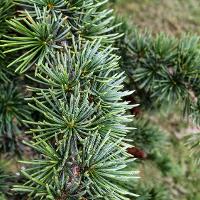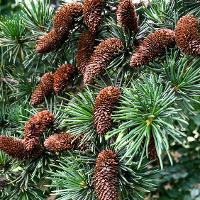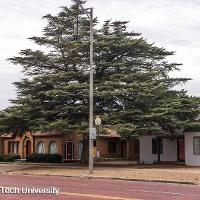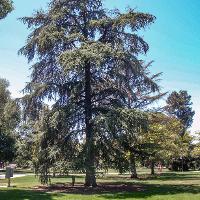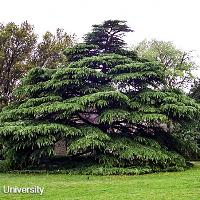Deodar Cedar
Cedrus deodara
Evergreen-Trees
Deodar cedar is a large, evergreen specimen tree. Although comparable with atlas cedar in many respects, deodar cedar exhibits less cold-tolerance.
(Detailed plant information can be found at the bottom of the page.)
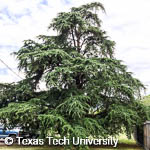
Cedrus deodara Photo Gallery
Cedrus deodara Plant Information
| Classification | |
|---|---|
| Scientific Name: | Cedrus deodara |
| Common Name: | deodar cedar |
| Family: | Pinaceae |
| Suggested Uses: | large specimen tree |
| Characteristics | |
| Plant Form: | pyramidal form |
| Height: | 40 - 60 feet tall |
| Foliage: | evergreen, needle-like, stiff, and 1 to 2 inches long fifteen to 20 leaves for each whorl needles are less stiff and longer than C. atlantica |
| Flower: | monoecious |
| Fruit: | cone that is 2 to 3 inches long and on top of branches cone looks like a barrel |
| Bark: | smooth |
| Environment | |
| Sun: | full sun |
| Soil: | well-drained soil |
| USDA Zone: | zones 7 - 9 |
| Care | |
| Maintenance: | does not need much pruning |
| Pests & Pathology: | can get weevil (bores into the trunk); if tree is dying, first thing to look for is the deodar weevil |
| Additional Notes: | graceful looking tree with a pendulous growth habit very sensitive to cold temperatures similar problems and uses to C. atlantica |
TTU Plant Resources
-
Address
Texas Tech University, Department of Plant and Soil Science, Box 42122, Lubbock, TX 79409 -
Phone
806.742.2838 -
Email
Melanie.Jackson@ttu.edu



